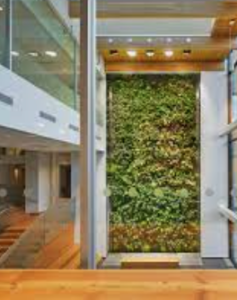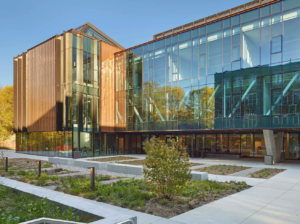As you may have noticed from latest book reviews (The Nordic Secret & The Future of Learning), I am doing more research that dives into some historical and contemporary examinations on the purpose of education. in particular, education as preventative medicine: not learning about the conflicts and injustices alone; rather, (and at a very high level) how do we create an educational experience that develops humans to have the skills and dispositions to live in community with others and to be justice seeking?
 Human Ecology, by Frederick Steiner provides excellent insights on what we can learn from the art and science of ecology. Everything from landscape art & architecture, city planning and regional planning is addressed, and done so at a level this both accessible and thought provoking. As I read through this book, ideas of how to integrate ecological approaches into education jumped out at me! Mind you, I was primed by the previous two books, and a host of other articles that I am engaged with.
Human Ecology, by Frederick Steiner provides excellent insights on what we can learn from the art and science of ecology. Everything from landscape art & architecture, city planning and regional planning is addressed, and done so at a level this both accessible and thought provoking. As I read through this book, ideas of how to integrate ecological approaches into education jumped out at me! Mind you, I was primed by the previous two books, and a host of other articles that I am engaged with.
You would be interested in this book if you were looking to:
(1) Learn about ecological learning within and beyond and educational context;
(2) Understand how to connect more with the communities, environment and people around you;
(3) Think broadly about how education can integrate ecological learning;
(4) Get inspired about what might be possible by connecting ecological learning with indigenous ways of knowing, leading and being in community.
What is Human Ecology?
Human ecology emphasizes complexity over reductionism, focuses on change over stable states, and expands ecological concepts beyond the study of plants and animals, to include people… The new ecology addresses the complexity of human interactions rather than how a specific physcial environment shapes human anatomic variations.” (Steiner, 3)
With this definition, educators can begin to contemplate and experiment with different kinds of conversations about the environment and about non-humans in that environment. I am reminded of Robin Wall Kimmerer’s book “Braiding Sweetgrass” which asks the reader to look through a different lens at nature: “In some Native languages the term for plants translates to “those who take care of us.” (Kimmerer)
different kinds of conversations about the environment and about non-humans in that environment. I am reminded of Robin Wall Kimmerer’s book “Braiding Sweetgrass” which asks the reader to look through a different lens at nature: “In some Native languages the term for plants translates to “those who take care of us.” (Kimmerer)
Steiner inspires to move beyond the layperson’s conception of ecology as separate from humans. To do so, the book is divided into different spaces:
- Habitat
- Community
- Landscape
- Ecological Regions
- Nation, State and Nation-State
- The Green Chaos of the planet
- Following Nature’s lead
Each section is framed through the lens of ‘edges and boundaries’ and builds upon one another. The book pays close attention to these zones of transition from one to another. “With people, to be ‘edgy’ is to be different, to take risks and stretch boundaries.” (29) and I think one of the thesis of this book is to promote edginess in an ecological sense. He provokes us to think about sustainability through the lens of ecology – that sustainability and conservation imply stasis; however, ecologies know that change is the only constant. So how do we grow our comfort with understanding and living with change, and how does that influence our concepts of living healthy? Again, Kimmerer comes to mind, in her thesis of to conserve the land means to use the land in the way it was meant to – through indigenous ways of knowing and being in harmony with the change of the land.
One simple way that I explore this is to follow CanadaPaintings on Twitter for a daily exposure to different ways of seeing the world, nature and everyday objects.

Diversity is our Hope
Diverse ecosystems have the capacity to respond to infection more quickly, and more effectively than homogenous ones. Diversity is ourplanetary birthright. Can we learn to emphasize the positive of variety? Can we learn to celebrate the irregular, the complex? (pg. 157)
If change is the constant, then Diversity is the strength and something to be cultivated. Bringing in diversity of thought, experience and ways of knowing is as critical to design and architecture as it is to education. “To consider our impacts on future generations, we should try to understand the world around us.” (pg. 171) and to do so, we need a diversity of thought and input, and a diversity of perspective, including 7 generational thinking (170)
Questions to Consider:
When I centre this text in the wider body of research on the future of learning, I am struck by this provocation:
Connecting technologies – the automobile and the Internet – may
divide people and, thus further fragment communities. We constantly attempt to connect through information and transportation technologies. Connectivity will continue to transform human society, but how? Some queries we could use to find answers are the following: What will communities look like when people don’t have to be next to each other for commercial reasons?
How will business, educational, and public institutions be affected?
How will connectivity affect use, knowledge, experience, and perception of place? (151)
 If we seek to have generative answers, student centred solutions, and optimistic
If we seek to have generative answers, student centred solutions, and optimistic  answers, I think that taking this ecological lens would bring us farther along indeed. This provocation has inspired me to look into more indigenous ways of knowing and seeing the harmonies that exist between them. Some simple ways that I engage in this work is to consider the spaces and places, and how they are taken up by students and faculty. At my school, we have just completed a beautiful new build that emphasizes windows, gardens (a bio wall and an outdoor quilted garden). I notice how we take up these spaces and use these spaces to our advantage – I wonder how we can ‘be’ in the spaces and not just ‘use’ these spaces.
answers, I think that taking this ecological lens would bring us farther along indeed. This provocation has inspired me to look into more indigenous ways of knowing and seeing the harmonies that exist between them. Some simple ways that I engage in this work is to consider the spaces and places, and how they are taken up by students and faculty. At my school, we have just completed a beautiful new build that emphasizes windows, gardens (a bio wall and an outdoor quilted garden). I notice how we take up these spaces and use these spaces to our advantage – I wonder how we can ‘be’ in the spaces and not just ‘use’ these spaces.
Recently, we welcomed an indigenous educational consultant to the school, and I learned so much about just holding space and time to not just learn “in these spaces, but from these spaces.” these beautiful spaces. I was reminded of The Third Teacher, by Bruce Mao. It has even made its way into the Ministry of Ontario’s Edugains:
The learning environment, they suggest, is “the third teacher” that can either enhance the kind of learning that optimizes our students’ potential to respond creatively and meaningfully to future challenges or detract from it. Susan Fraser, for example, writes: “A classroom that is functioning successfully as a third teacher will be responsive to the children’s interests, provide opportunities for children to make their thinking visible and then foster further learning and engagement.” (2012, p. 67)
What is the Purpose of Education?
This is a question that guides my research presently. While there is no simple, concise answer – nor a simple one that can be boiled down into a catch-phrase, I believe that the business, art and science of education sits above the specifics of curriculum, sits above assessment and sits above grading practices. Not to say that these are not key aspects of what make education work – because don’t get me wrong, in many ways education works and fulfills many purposes; however, the purpose of education is more about forming (as I learned in “The Nordic Secret”) and opening up a deeper understanding and ways of understanding one’s self and others in an increasing complex world (as I learned in “The Future of Learning”). Steiner’s Human Ecology adds to the depth of the forming and deeper understandings: adding in how we understand, relate and connect to the ecosystems that we are apart of.

@gnichols, thank you for the account and interpretation as always. Your posts/reviews resonate especially strongly as you place them within context of a larger pursuit of research and ever-evolving understanding and articulation of education. So powerful. For what it’s worth, I’m inspired to read on – ‘Human Ecology’ and reading/research at large. THANK YOU!
Man, I love the Braiding Sweetgrass reference as I seem to be going out of my way to reference it constantly these days – in education and life – and endlessly contemplating a deeper connection to nature and our place within the larger circle of life:
“Knowing that you love the earth changes you, activates you to defend and protect and celebrate. But when you feel that the earth loves you, that feeling transforms the relationship from a one-way street into a sacred bond” (125).
I believe there are so many important connotations with this idea. Within education, I think of the larger community, the many cultures we create within that. Does the manner in which we include and connect to students reflect (promote, inspire?) this idea of reciprocity? What do you think, does this begin to address your powerful question? ‘So how do we grow our comfort with understanding and living with change, and how does that influence our concepts of living healthy?’ Is there an opportunity within this idea to better position ourselves and students to by “edgy”?
Thanks @gvogt – yes, I think it does, and the more that I read and work with Indigenous educators, the more I believe that the meta-structures of education can foster reciprocity. I’m only part way through “Potlach as Pedagogy” but I think this is another resource that supports this.